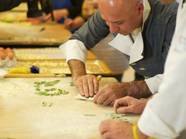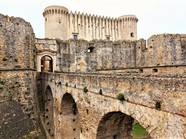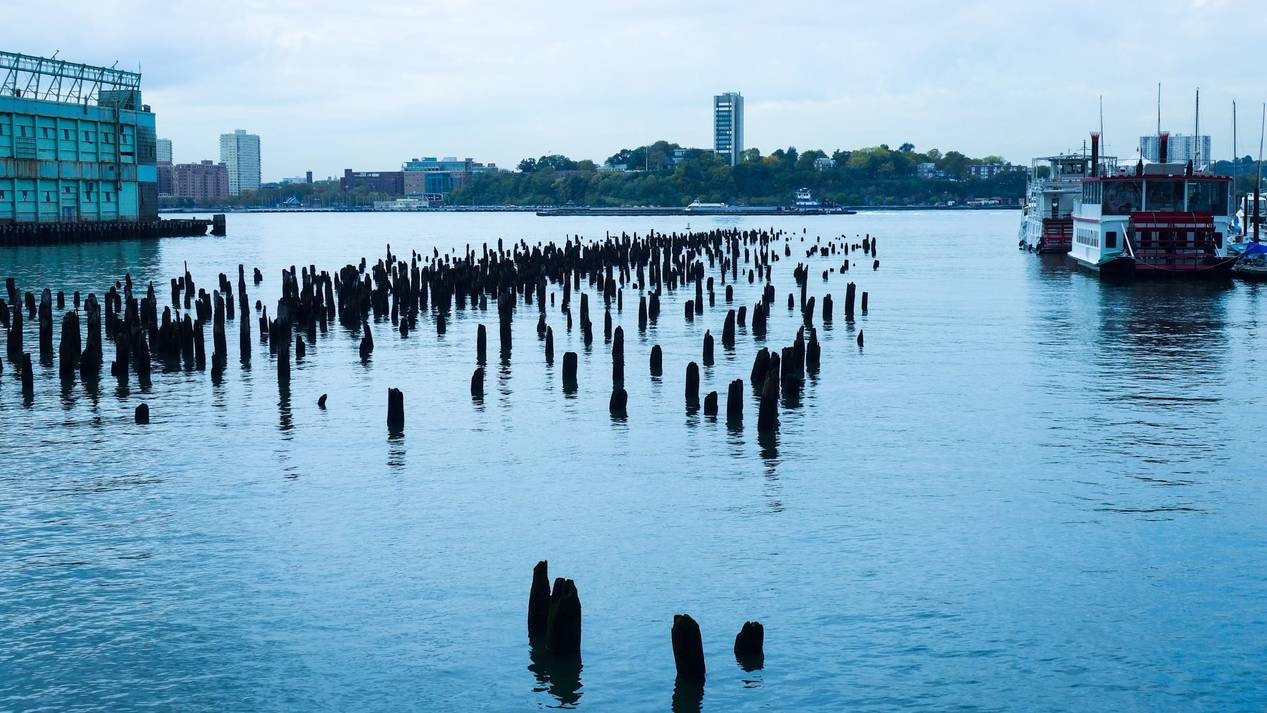Giuseppe Di Piazza: Stories in Frames
Stop a second to absorb these photos. Take time out of your increasingly photo-saturated lives. Of selfies. In selfies. Of Instagram accounts. On Facebook. Photographs have become faster than time itself—but remember? They were created to stop time. Re-experience the wonder that comes from looking at a photograph carefully and discovering its moment. Its photographer’s intention. Let yourself be lured by it until the photograph becomes yours. Love it or hate it. Bring that attitude to Giuseppe di Piazza’s sensuous, cerebral, alive Landscapes on exhibit at the Casa Italiana Zerilli-Marimò.
A Life of Words and Photos
“Photography was a gift I discovered when I was 12, thanks to my mother, who gave me a Kodak Instamatic,” says Di Piazza. “I remember the first time going around Rome and photographing the city, in September 1970. People were celebrating the centennial of the “Breach of Porta Pia” [the decisive battle for unification, when the Kingdom of Italy captured Rome]. There was a festive atmosphere, and I was thrilled to have the chance to capture Rome’s beauty in black and white.” This early adventure in photography led (unsurprisingly, given the times) to the dark room.
“I spent whole days standing under those red lights. There’s an art to the dark room. It teaches you about how light enters the camera and how to use it to make prints.”
To this day, Di Piazza thinks in terms of time, diaphragms, and analog, even when he’s using a digital camera and working in the postproduction “light room” (i.e., Photoshop).
So everything started with Mom?
“Yes. In 1966 my mom, along with my dad—a doctor—opened a gallery in Palermo, arguably one of the most important in Southern Italy back then. They enabled me to grow up in an extraordinary visual context, among paintings and painters. I met internationally known Sicilian artists and writers, like Leonardo Sciascia and Renato Guttuso.”
The boy in the dark room later embarked upon a successful career as a journalist and writer, which led him to work for various news outlets, the last being Corriere Innovazione, a monthly publication attached to Italy’s largest newspaper. Which begged the question: how important was photography in your other careers?
“They go hand in hand. Photography is an integral part of journalism. In the mid 1980s an American company was already acquiring photos and stories from me. They were paying me for jobs that would be distributed to forty or so journals. But even in my writing, photos come first. I think of my novels frame by frame. When I imagine describing a scene, I think of it photographically. Or rather, cinematographically.”
But today he has moved away from traditional photojournalism.
“I prefer to talk about it as an expression of feelings, vision, perceptions. I’m interested in the artistic side… At the same time, when I write I use a lot of photos. I search for them online too. I always look at images of things that I have to write about.”
How Italian Is New York?
In the 1980s Di Piazza left his hometown Palermo and moved first to Rome and then to Milan, where he works today. But he also has close ties to America and considers New York one of the places that most inspires him.
“NYC is, as Alicia Keys and Jay-Z say, a state of mind. It’s not just a city. It represents an existential condition for all these people who decided to live together. And whoever comes here, even for just 15 days, is caught up in this spirit. For a writer and photographer like me, there may be no better place—after Sicily, obviously.”
But there are greater reasons for his bond with the city; Di Piazza has a beautiful American wife and a grand grandfather who briefly emigrated to the U.S. Di Piazza himself came pretty close to being born here.
“I love Italian Americans. I should have been one of them. My grand grandfather Luigi was a metal worker who moved here in 1899 to work in the shipyards in Brooklyn. Unfortunately, after a few yearss, he fell ill and had to return to Sicily.”
It was Di Piazza who, as an established journalist for the Corriere della Sera, made it back to New York to document its Italian spirit. The city floored him. “I found proof of a real richness that is too often overlooked. We built really vibrant communities here, which form an important social structure in America. It’s a wild legacy and I wanted to get to know better these new American communities—Italians from America, Americans from Italy—that may have lost their internal cohesion yet are well aware of where they come from.”
Then there’s the New York that knows a thing or two about sleepiness. “[It’s] almost like an Italian village,” he says. All the guidebooks describe New York as the city that never sleeps. But the real New Yorker knows that’s not always the case. New York’s sleepy pockets are often its most alluring, a fact that didn’t escape Di Piazza’s notice. “You can set the rhythm of New York yourself. If you write novels, go out for drinks with friends, walk the dog, and chat about literature all the way to the edge of the East River, you inhabit a sort of paradise, and you might think you’re in a small Italian town. It may not be the sea around Capri, but you can taste the taste. If you stray far from the most famous symbols of New York, you can discover a beautiful, almost unknown place.”
Landscapes and Portraits
In April NYU’s Casa Italiana Zerilli-Marimò will host Di Piazza’s photographs of urban landscapes, ranging from major cities like New York and Singapore, to those same small Italian towns. Why landscapes in particular?
“Because it brings me joy to describe places that trigger an emotion, to take photos that represent sensations. In describing my work, some journalists exceed my own intentions. There are intentions that a painter can’t have. The same holds true for photographers.”
Di Piazza is also a great portrait artist. He may deny it, but his modesty strikes us as excessive.
“I don’t see myself as a portraitist, even if I do have a significant archive of portraits dating back to the 1960s. I adore photographing people, women in particular. With the latter I succeed in establishing a dialogue while I photograph them. Maybe that’s because I directed a magazine devoted primarily to photography. But I feel more comfortable with landscapes. It’s a product of my digital training. Digital allowed me to work with a palette of colors just as I wanted. That wasn’t easy with analog. For me, color is the language of landscapes. Black and white is the language of portraiture.”
And yet his portraits of women are quite impressive. Shot by shot you are struck by a Sicilian quality of scrutinizing a subject with thoughtful yet discreet, un-invasive curiosity. Any women would want to be photographed this way. How does he do it?
“I want to the women to be able to recognize themselves. I try hard not to alter reality in order to capture a woman’s inner beauty. I can’t do fabricated portraits. I need to create a complicit play of gazes between model and photographer. When I can see her beauty, I take the photo. There are photographers that model models, as if they were made of plastic. Not me.”
We hope to see the actual photographs in New York one day. In the meantime you can view Di Piazza’s portraits on his website and see his sublime landscapes that currently constitute “not an exhibition,” as the artist says, “but the exhibition.”
“Being invited to exhibit my photos in a place as prestigious as NYU’s Casa Italiana brings me great joy. It’s an enormous honor for my work. My heartfelt thanks go to the director, Stefano Albertini.”
What’s it like exhibiting for the first time in New York?
“Indescribable. Because, as I said before, the city is a part of my family, a story that might have been but never was, a constant allure.”
For more information on the show at Casa Italiana Zerilli-Marimò click here












































i-Italy
Facebook
Google+
This work may not be reproduced, in whole or in part, without prior written permission.
Questo lavoro non può essere riprodotto, in tutto o in parte, senza permesso scritto.